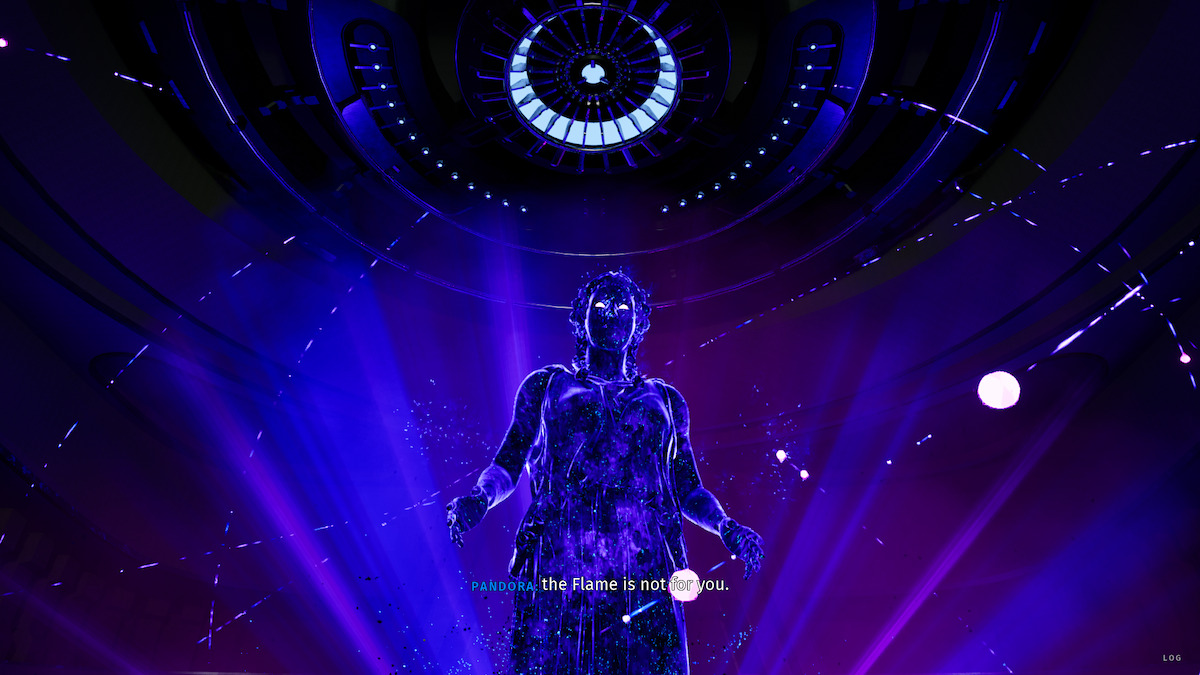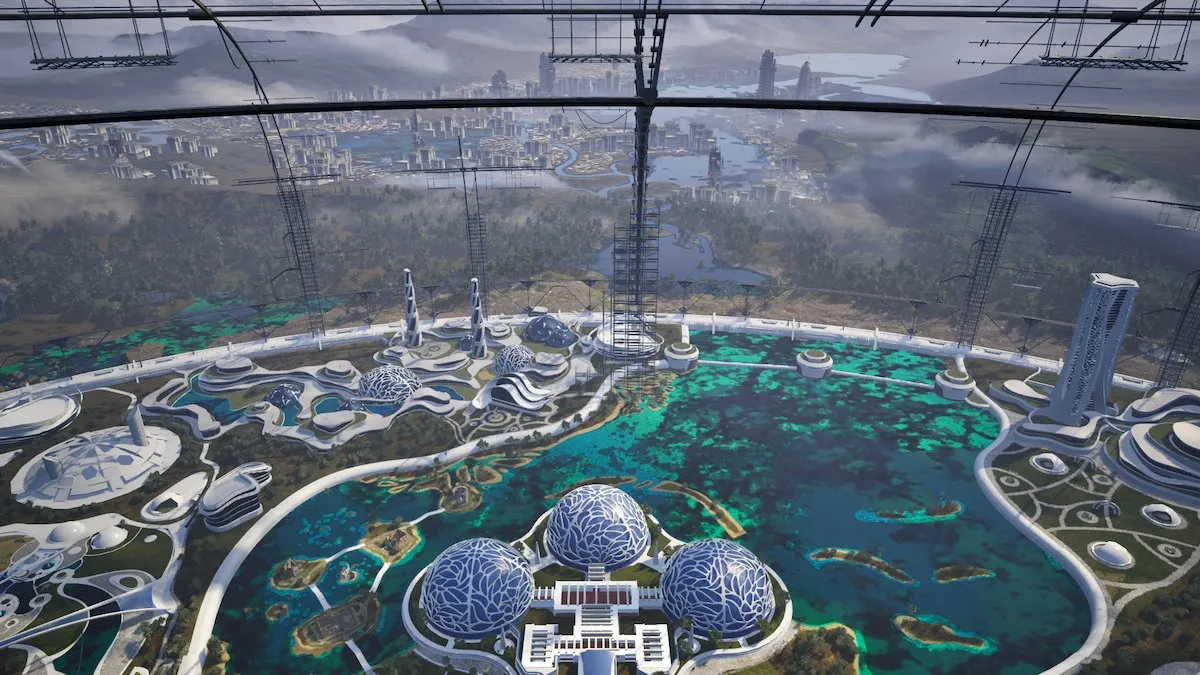The world of gaming raised up a science fiction puzzle game series with test rooms and robots once before as one of the greatest game series to ever exist. This is perhaps evidence there is room for more games like that to capture our hearts in creative ways. Enter the original Talos Principle, a 2014 puzzle game with majority overwhelming positive reviews on Steam and solid critical reviews. And for everything it was, my preview into the sequel showed the developers took a stunning and breathtaking new direction. What awaits you in the sequel? Here’s an early impressions review of The Talos Principle 2.
The Talos Principle 2 early impression review – what is this series and what’s next?
The Talos Principle is a simple game to break down. It’s a long game of puzzle room after puzzle room in various environments while a voice tells you you’re doing all of this to ascend to immortality. Your character’s a test dummy robot and the environment occasionally glitches out, so it isn’t hard to guess something’s going on. As you slowly piece together the game’s story, you learn humanity died of a virus that escaped the melting ice. The world you’re playing in is just a simulation running on a system indefinitely. The tests of the Simulation are trying to develop the first truly independent, sentient AI in order to upload its conscience into a robot body in the real world and create a new humanity long after all humans are gone to continue their legacy.
This is the true ending of the game, which you achieve by defying the will of the voice talking to you throughout the tests and passing the true independence test in doing so. You watch the robot get up after being uploaded and look out onto an Earth without humanity.
In the sequel
Related: The Talos Principle 2 Announced
While the original game and its story can be summarized succinctly in just that paragraph, the sequel cannot. The sequel appears at first to be the same deal. You wake up in the Simulation and go through several test rooms. The same omniscient voice as the last game tells you you’re going to wake up soon. But then it completely flips the script by doing exactly as it promised. Suddenly, the player character is thrust into the real world talking to another robot — having been born, as the game puts it.
The player’s referred to as 1k. You quickly learn you’re the one-thousandth new human — sentient robot — to be born. This completes a Goal of the new civilization of humans (aptly named New Jerusalem) meeting their quota and no longer making any new robot people. This Goal was set by the Founder, Athena, aka the player character from the original game, who saw how humans destroyed the world and decided it would be better to live humbly as part of the world without dominating it. But suddenly, some kind of projection of Prometheus appears to interrupt the Mayor’s speech and you set off with several other robots to investigate a mysterious energy reading, which quickly turns out to be a series of puzzles to unlock a mysterious temple. But if you’re the only intelligent civilization, who built this…?
While some puzzle elements from the original remain, others are entirely fresh and open up whole new ways for your brain to try and process how to work with the mechanics of each. And with that, an entirely new and deeper story steeped in a similar puzzle format as before is created.
Gameplay
The Talos Principle 2 isn’t meant to have complex gameplay. You control a robot humanoid in either first- or third-person, your choice. You walk and run around, talk to people, and interact with objects. Beyond that, you’ve got a semi-open world compared to the first game. You can spend your time talking to NPCs and exploring every nook and cranny of the map areas to find secrets, which is an absolutely great and necessary boon over the first game. The puzzles make my head explode, and sometimes walking around the beautiful and relaxing maps is exactly the break you need to come back to them.
My biggest frame of reference for these types of games is the Portal series, and the puzzle style and language embodied there. The Talos Principle 2 has a different puzzle design than that series. Staring at the environments in Portal 1 and 2, I could figure out most of the puzzles in those games if I thought about it long enough. You can’t do that as much in these puzzles. They’re far more about the individual mechanics and objects than the room environment. I pretty much did the equivalent of banging my head against the wall, thinking as deeply as possible about what I was missing because the puzzle room language is difficult to read, and then eventually managed to figure out the right thing.

It was satisfying when I finally did, but it turned it into a game where you have to give it a break and come back, which was certainly quite frustrating at times. However, my mixed feelings on the puzzle design still weren’t enough to turn me off of wanting to play the entire game, which tells you a lot about the rest of it.
Graphics and functionality
This game is gorgeous. The environments are on point and everything they need to be. I enjoy simply running around every area.

That being said, there were some minor visual errors and awkwardness as I went along. The shadow of the player detaches the head from the body as you run. An NPC teleported further down as I was talking to them. I watched a robot play a guitar and the animation sync was not convincing. Some subtitles had minor errors. None of this is terribly distracting, but I did notice it enough to hope it is fixed by release.
The narrative aspects
As explained above, the premise for this game is utterly fascinating and engrossing. It feels like a fresh and unique take and setup on a well-recognized premise for a world and story. Robots living in place of humans is not a new story, but something about the combination of their lack of attempt to look human beyond a vaguely human face, the fact they are truly carrying on and regarding themselves as the new humans, and both the limitations and advantages of their state make them feel very distinct from similar entities. These new humans don’t arrogantly believe themselves above and better than their ancestors, instead afraid of repeating their mistakes and coming up with their own frustrations, problems, and crises.
Thematic


The tagline for this game is not exaggerating when it calls itself philosophical. This game is incredibly philosophical and thematic, and while it’s about as subtle as a rock hitting you in the head, this isn’t usually too much of a detriment because everything it does say is incredibly fascinating and deeper with new directions I haven’t seen in the dilemmas it covers. Among the usual existential themes of what it means to be human and what the purpose of being created by something else is, there’s also the ideological debate of discovery and knowledge and exploration vs. being content, settling, and stagnation. When exactly is too much or too little, and can a person ever just be satisfied? It’s honestly the best exploration of the AI problem I’ve seen since SOMA.
Worldbuilding
Adding to that, this game’s world genuinely has some of the best worldbuilding I’ve seen. It is really nicely set up how the robot city works and the fact they’re robotic and immortal is taken advantage of in logical ways.

They have social media, livestreaming, and calling each other effortlessly, there’s a lot of talk about how to upkeep the city and power sources, and there’s a discussion of how the robots can die if they’re blown up and unsalvageable. They can even have siblings. The city and surrounding world look stunning. There are great small details like how signs are all in Morse and QR codes. It’s a perfect blend of technology without feeling too overwhelmingly futuristic, but instead is humble and in symbiosis with the natural world around it, a nice break from the “pure” sci-fi aesthetic.
Characters
The voice acting is really good, which helps sell the characters of the game. I find the characters to be colorful and realistic besides the moments where they just spout the game’s philosophy. Each one has their own distinct personality and the group your character ends up with plays off of a nice group dynamic. They have layered and nuanced interpersonal relationships, morals, and ideas. Talking to them to get every piece of dialogue is enjoyable. There is an aspect to them that feels real and simply full of character.
All this comes together to mean I was disappointed when the demo ended. I didn’t get to see inside the mysterious pyramid I had just spent days on puzzles to get into. I wandered all around New Jerusalem taking in every detail and talking to every NPC it let me. The story, world, and mysteries presented are just that good to soak in. I would bear the puzzles over and over just to see how this story ends. It’s up there with My Friendly Neighborhood and Slay The Princess as best of the year for me.
On top of that, the game is just funny sometimes. The robots keep remarking about their out-of-date language libraries when they use modern slang. You can turn on an inner monologue and your character will start narrating wanting the voice to stop, and it’s hilarious. I really love everything about the game’s story and I can only imagine it gets even better.
An incredible and original sci-fi experience
In this early impressions review of The Talos Principle 2, if I were to give the game a rating, I’d say somewhere around an 8.7 out of 10. The puzzles themselves are easily my least favorite part and their design philosophy frustrates me. But I’d still happily play this game with a walkthrough even if the puzzles aren’t fun. The world and story are worth exploring every mystery.
If you like puzzle games, you’ll love this game. If you don’t, you still might like it — with a walkthrough. It comes down to whether the themes and story interest you or not. It doesn’t matter if you know anything about the first game, this is an entirely new experience by itself. I have faith that something amazing, even with the potential to change lives a little, awaits in the full release.
More Talos Principle 2 articles






Published: Oct 6, 2023 09:48 pm